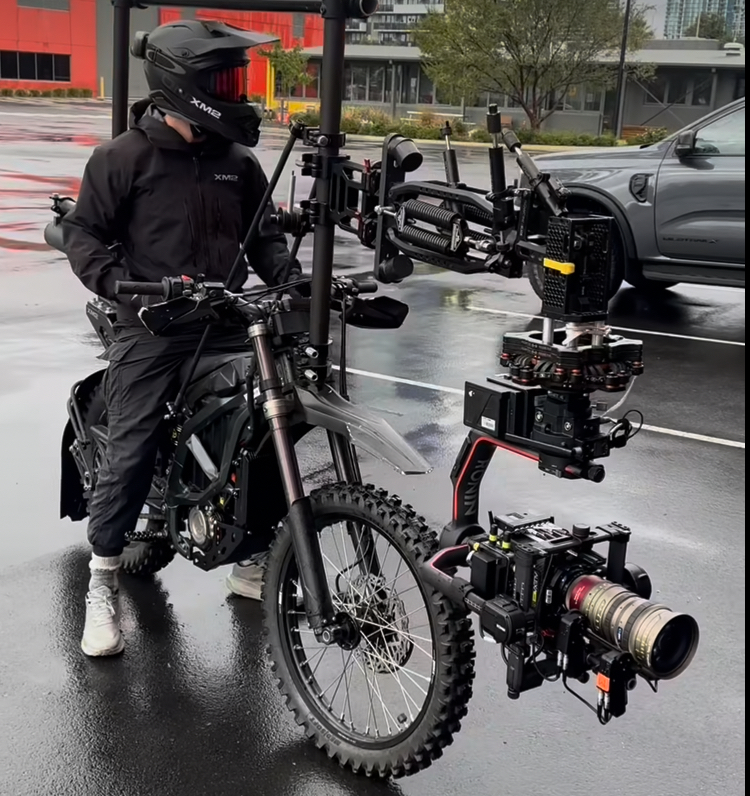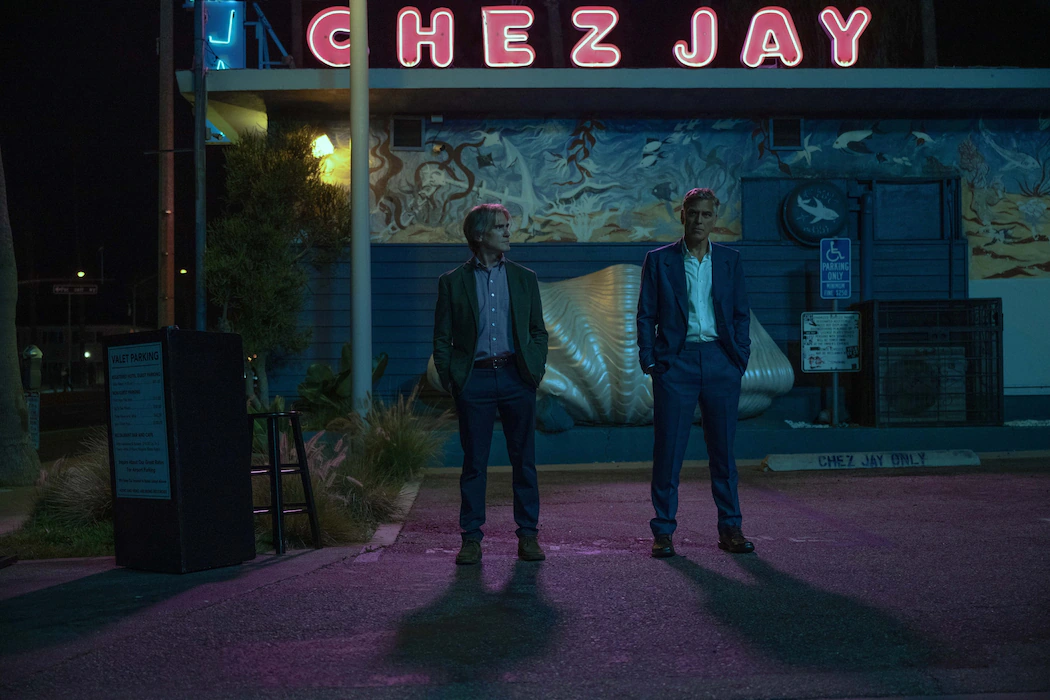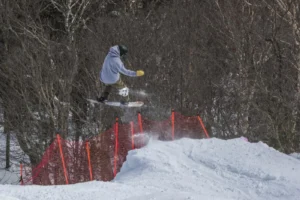Some names carry water, others carry weight. Lucas Tomoana, known to many as L.T., carries both. Born of Māori and Samoan heritage, his very name traces a lineage of survival, service, and storytelling. “Tomoana” means “of the sea,” a title not given, but earned—by an ancestor who once pulled souls from the surf, anchoring a legacy of guardianship. That legacy courses through L.T.’s veins, not through combat, but through camera lenses, shadows, and frames.
In the image, the Rob Stagg straddles a rugged electric dirt bike outfitted with a cutting-edge camera gimbal system—an elite cinematic rig purpose-built for kinetic tracking shots at speed. It’s not just a tool. It’s an extension of his vision, one shaped by a journey from the Australian Army Reserves to the upper tiers of visual storytelling.
This is the story of a filmmaker whose path defies convention—rooted in discipline, forged in culture, and propelled by a love of motion.
From the Battlefield to the Viewfinder: A Career Reframed
L.T.’s early trajectory seemed destined for the military. At 18, he joined the Australian Army Reserves, following the footsteps of his father. But even amidst drills and discipline, another form of clarity emerged. “I was much better at shooting film than rifles,” he recalls with characteristic dry wit. The remark may sound modest, but it hides a deep truth: that cinematic vision requires precision, timing, and instinct—all traits shared with combat training.
It wasn’t just talent, though—it was calling. While other soldiers perfected aim, L.T. honed focus. His fascination with cameras grew stronger, pulling him away from the military and toward visual storytelling. The decision wasn’t easy. Leaving a structured, honorable career path meant risk. But risk, after all, is cinematic. And L.T. bet on his eye.
Formative Years: Training, Hustle, and First Frames
L.T. transitioned quickly into the world of camera assisting, taking on commercial gigs while studying at Griffith Film School. It was there that his raw instincts were refined by technical rigor. In 2010, he was awarded the Cinematography Award for his graduating year—a clear sign that his decision to pivot had paid off.
But the real breakthrough came in 2013, when he was chosen as one of only ten cinematographers nationwide to study at AFTRS, the Australian Film, Television and Radio School—a fiercely competitive national institution in Sydney. This was less film school and more filmmaker bootcamp, a crucible where ambition met skill and was forged into artistry.
At AFTRS, L.T. learned to translate emotion into exposure, and motion into meaning. He wasn’t just learning how to operate cameras—he was learning how to wield them as storytelling weapons.
The Language of Motion: Building a Career in Cinematic Movement
L.T. didn’t simply choose to be a cinematographer—he chose a very specific cinematic language: motion. Whether on foot, mounted on a vehicle, or flying via drone, his camera moves like a protagonist. The visual grammar he’s honed is kinetic, immersive, and decisively modern.
This brings us to the image provided: L.T. astride a high-performance electric dirt bike, outfitted with an XM2 Labs motion gimbal system. This isn’t a novelty—it’s a working rig used for car chases, action sequences, and high-speed tracking shots in top-tier productions.
The gear includes:
- A Ronin 2 gimbal, stabilized for precision motion control.
- A RED or ARRI cinema camera, most likely shooting in 6K or higher.
- A fully shock-absorbed carbon armature system, mounted to the bike’s frame.
- Wireless video transmission and remote lens control—so focus pullers can operate from a distance, often in follow vehicles.
This entire setup allows L.T. to capture shots that are otherwise impossible—fluid, fast, and physically immersive. It’s a modern-day centaur: man fused with machine, capturing image at the speed of adrenaline.
Cultural Gravity: The Indigenous and Pacific Influence
But L.T. isn’t just a technician. His roots ground his craft. His Māori and Samoan lineage informs the way he sees the world, the way he lights faces, the way he holds silence in a frame. His mother is a Matai, a Samoan chief, and that heritage lives on—not just in the tattoo on his arm, but in the respect he brings to the stories he tells.
His identity is not ornamental. It is fundamental. It’s there when he chooses to frame a scene from below—an echo of ancestral respect. It’s in his preference for natural light and human imperfection. It’s in his ability to build trust with subjects, whether documentary or fiction.
While other cinematographers emulate glossy perfection, L.T. often leans into texture, shadow, and realism—mimicking the way Pacific light dances on skin, or how dust refracts through morning sun.
Technical Mastery Meets Artistic Purpose
L.T.’s craft thrives on contrast—between movement and stillness, between precision and intuition. He’s at home configuring high-frame-rate shots on 8K RED Monstros, yet never loses sight of emotion. That balance is what sets his work apart.
Recent collaborations have seen him work across formats—documentary, short fiction, and branded content—with a common visual DNA: immersive, grounded, and subtly epic.
He treats gear not as an obstacle, but as instrumentation. The camera becomes an extension of his body. When he moves, it moves. When it rests, it breathes. And when it rolls, you feel it.
The Bike Rig: A Tool of the New Visual Frontier
Back to the bike. In the digital age, where drones, FPV rigs, and gimbals dominate behind-the-scenes reels, camera mobility has become narrative power. L.T. is on the forefront of this evolution. The custom electric dirt bike rig shown in the image is not just for stunt work. It’s a narrative tool.
Why does this matter?
- Speed + Stability: The bike can pace cars, athletes, or moving subjects while delivering buttery-smooth footage.
- Eco-Friendly: Electric vehicles reduce sound and environmental disruption—essential for sensitive shoots.
- Agility: The rig can go where dollies, jibs, or cranes can’t—narrow alleys, uneven terrain, interior/exterior transitions.
- Safety: L.T. rides with full protective gear and operates with a remote team—a coordinated, professional workflow honed through military discipline.
This approach collapses the boundary between DP and stunt performer. It’s combat cinematography, minus the bullets.
Influence, Mentorship, and Community Impact
While L.T.’s technical and creative accomplishments are formidable, his impact goes beyond the frame. He has become a mentor and role model within both the Indigenous and broader filmmaking communities. His path proves that there is no one way into cinema—that heritage, resilience, and risk-taking matter as much as gear specs or school credentials.
He often speaks to young filmmakers about discipline and storytelling ethics, emphasizing that the camera is not just a tool—it’s a responsibility. What we frame, how we frame it, and who we frame all carry moral weight.
The Future: High-Speed, High-Concept, and Deeply Human
As filmmaking continues to merge with technology—real-time rendering, volumetric capture, AI—L.T.’s hybrid skills make him uniquely positioned for the next wave. He speaks both analog and digital, emotional and technical, human and machine.
We can expect to see his name attached to projects that bridge documentary and action, that bring Pacific stories to global audiences, and that push camera language into new territory.
Ride the Line, Frame the Truth
Lucas Tomoana doesn’t just shoot films. He moves through them. From the Army Reserves to the AFTRS, from ancestral pride to cinematic innovation, his journey is one of movement, meaning, and memory.
The bike rig is emblematic: fast, balanced, and powerful. Like L.T. himself. A filmmaker of the sea, but fully grounded—riding the line between grit and grace, always chasing the next perfect shot.
No comments yet.








